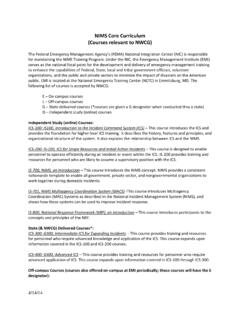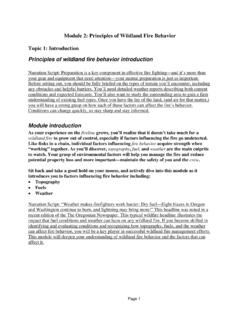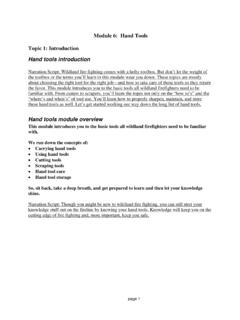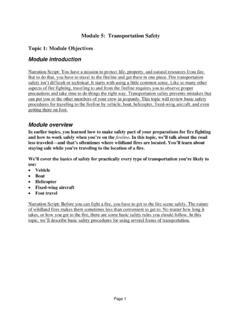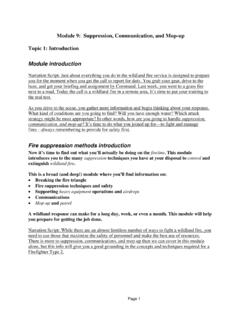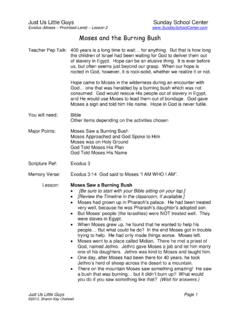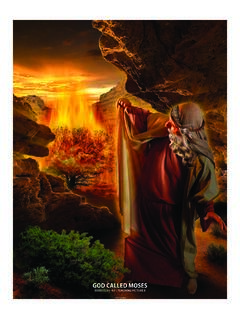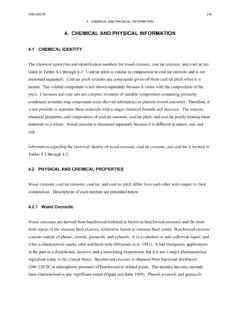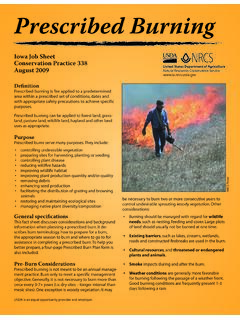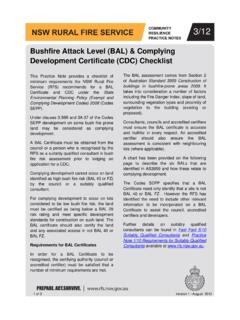Transcription of Fire behavior Module introduction - NWCG
1 Module 3: Monitoring fire behavior Topic 1: introduction fire behavior Narration script: On a fire scene, just like in everyday life, a bad situation can get worse if you ignore the signs of trouble and fail to nip the problem in the bud. Given the right conditions, a potentially hazardous fire can turn into a rapidly spreading one burning with a fierce intensity. Your rapidly growing knowledge of fire behavior will help you spot potential changes BEFORE they happen. And in doing so, you and your crew will stay safe while continuing to manage the wildland fire . Module introduction If you ve gone through this course in the order it has been presented, you ll recognize some concepts already discussed but the fundamentals of wildland fire fighting are lessons reflected on over and over throughout the course of a firefighter s career.
2 Even if you re a seasoned veteran of wildland fire fighting, you ll find information in this Module you should review and consider carefully. Specifically, this Module describes factors influencing a fire including: Fuel characteristics Fuel moisture Fuel temperature Topography Wind Atmospheric stability fire behavior Look familiar? These are the seven factors of the Look Up, Down, and Around rule from the Operations section of your Incident Response Pocket Guide (IRPG). A full version of the IRPG is available in the collection of resources available for this course.
3 Narration script: As you go through this Module , you should be getting the sense that wildland fire fighting requires an eye for detail and evaluation. Like a detective veteran firefighters have the vision to put together the pieces of the puzzle that drive a fire s behavior . One look at the weather, topography, and available fuels might tell you very quickly how the next minute, hour, or day will go for you and your crew. Fortunately, you ll be packing a pocket reference guide to remind you it s your IRPG. Many of the rules developed for the IRPG have come as a result of wildland firefighters losing their lives so remember, they are there for your safety.
4 Page 1 Problem vs. extreme fire behavior One of the overall goals of this course is to get you ready to anticipate and evaluate changes in a fire s behavior based on your evaluation of current conditions. Wildland fire fighting is as much an intellectual and mental exercise as a physical one, and you ll need to stay focused.
5 Fires rarely go from small fires to extreme blowups without signs pointing the way. Working on the fireline demands your attention to details, and you ll have to monitor your surroundings. Fires can quickly change between two states: Problem fire behavior Problem fire behavior has the potential to hurt you or other fireline personnel if the tactics being used to fight the fire are not being adjusted according to conditions. Problem fire behavior can easily go to extreme fire behavior if you don t recognize the indicators that tell you the fire is changing and that it is time to change your game plan.
6 Extreme fire behavior Extreme fire behavior is also a problem, but kicked up another notch. Here are some tell-tale signs that the fire is becoming extreme: Rapid rate of spread (ROS) ROS is the relative activity of a fire in extending its horizontal dimensions Intense burning Spotting Crowning Narration Script: Part and parcel of the Look Up, Down, and Around procedures found in the IRPG is the ability to begin to spot and differentiate between problem fire behavior and extreme fire behavior . That s why you and your crew need to be able to read the writing on the wall when it comes to weather, topography, and fuels.
7 Each factor of the fire environment can help you understand a fire s behavior and therefore adjust your tactics accordingly. As you go through the rest of this Module , start to piece together the environmental factors that might turn a fire into an extreme situation. Page 2 Topic 2: Look Up, Down, and Around Topic introduction Wildfires don t just suddenly decide to become unruly.
8 In fact, their behavior is just like anything else s it s an opposite and equal reaction to an action. If you re paying attention on the fireline, you ll be able to observe those actions firsthand and then predict the fire s consequent reaction. This topic analyzes two types of fire behavior problem and extreme. Problem fire behavior is fire activity presenting a potential hazard to fire personnel if the tactics being used are not adjusted. Extreme fire behavior is the highest level of problem fire behavior and is characterized by: Rapid rate of spread (ROS) Intense burning Spotting Crowning This topic will present a list of factors and related indicators to help you determine when a fire is transitioning to problem, or even extreme, fire behavior .
9 Narration Script: As a wildland firefighter, develop a habit of checking your environment. It is one of the best ways for you to stay safe AND predict when fires will become problematic or extreme. This topic will familiarize you with the indicators of problem and extreme fire behavior and when the fire is likely to make the transition between the two. Because when you can see problem fire behavior , you can bet that extreme fire behavior is just around the corner! The Incident Response Pocket Guide Your Incident Response Pocket Guide (IRPG) is a handy tool for field reference for the content we ll cover in this topic.
10 Much of this topic is based on the Operational section of the IRPG. Use the Look Up, Down, and Around information in this section to help you monitor changing conditions within a fire environment the conditions, influences, and modifying forces controlling fire behavior . Narration script: Keep your head on a swivel, and don t forget to look up, look down, and look around. If you need a quick Look Up, Down, and Around refresher when you re in the field, take a quick peek at your IRPG. Pay special attention to the indicators in bold print. Page 3 The seven factors The Look Up, Down, and Around guidelines contain seven fire environment factors you should monitor every time you re at a wildland fire incident: 1.
